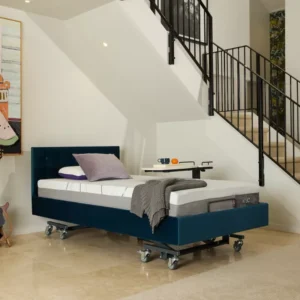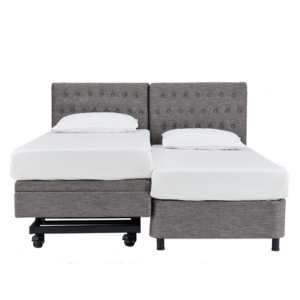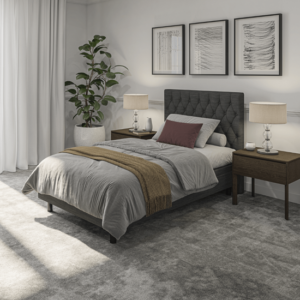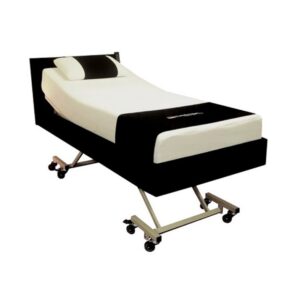Description
The I-Care Companion Base supports partners, parents or caregivers who wish to sleep next to a loved one without interfering with their clinical care. It’s a stationary bed designed for use with the I-Care homecare bed range.
The companion base has no adjustable functions, ensuring stability and simplicity. It features a timber slat sleeping surface and sits at a fixed height of 34.5 cm from the floor to the mattress platform. The lightweight frame and underbed clearance allow easy repositioning and cleaning access.
Finished in durable commercial-grade fabric, it matches seamlessly with I-Care bed models and is available in stone grey or onyx black upholstery.
Who it’s for
- For partners, parents or caregivers wanting to sleep beside someone in an I-Care homecare bed.
- For therapists wanting to support family-centred care with a fixed-height companion base.
Key Features
- Stationary bed frame – supports shared sleep without clinical adjustment features
- Fixed height platform – sits at 34.5 cm to align with I-Care bed ranges
- Timber slat base – to ensure support and breathability
- Lightweight and movable – easy to reposition as needed
- Underbed clearance – allows cleaning access and cable routing
- Commercial-grade fabric – matches I-Care adjustable beds






